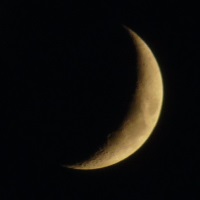Exploring the Moon

Tuesday 18th November, 2014
 |
For our November talk we were fortunate to have as our speaker, Dr John Massey who is currently the Deputy Executive Secretary of the Royal Astronomical Society. His lecture was entitled "The Moon: exploring our nearest neighbour" and covered broad themes including the very first lunar observers through the Apollo landings and up to present day missions.
He began by saying that it was the ancient Greek astronomer Aristarchus of Samos who in 270 BCE calculated the Earth-Moon distance using simple geometrical measurements during a lunar eclipse. His calculations were based on the apparent size of the Sun and Moon in the sky, the relative sizes of the Earth's and Moon's shadow during a lunar eclipse and the fact that the angle between the Sun and Moon during First or Last Quarter is very nearly 90° (i.e. a right angle). From his data Aristarchus calculated that the Earth-Moon distance was about 20 Earth radii, which less than a third of the true value.
Although it is possible to see features on the Moon with the naked eye it was the invention of the telescope that advanced lunar studies. On 26th July 1609 the English astronomer Thomas Harriot was the first person to make a drawing of the Moon using his telescope, even before Galileo. However, Harriot did not publish his work and so Galileo's drawings became widely recognised instead.
In the following centuries, as technology improved the telescope and other astronomical instruments, the Moon became more familiar but there were still puzzles to be solved. For instance, until the late 19th Century it was thought that craters were due to volcanism instead of impacting asteroids and even today there are competing theories for how the Moon was actually formed. To answer some of these questions various spacecraft have been sent to fly past, orbit, land on and even bring back samples from the Moon. Ahead of other nations, Russia has been the first to achieve all three of these objectives beginning with Luna 1 performing a lunar flyby.
However, the United States were not far behind and sent their own robot craft to survey the Moon in order to achieve an eventual manned landing with Neil Armstrong setting foot on the Moon on 21st July 1969. Included with all the Apollo landings were scientific instruments, some of which are still used today, such as the retroreflector arrays that reflect laser light shone from Earth in order to accurately measure the Earth-Moon distance.
Recently, many other nations have taken up the challenge of sending craft to investigate the Moon, including China's lunar rover Yutu and India's lunar orbiter Chandrayaan-1. One of the latest missions is Lunar Mission One which is a UK-led project to send a spacecraft to the as yet unexplored lunar South Pole. Rather unusually, this mission will be funded via a Kickstarter campaign where the public all around the world are asked to contribute.
The purely scientific goals of this mission are focussed on drilling deep down into the lunar crust. But the project also hopes to inspire a new generation about space, science, engineering and technology as well as leaving a historical record of life on Earth in the form of time capsules placed down the drilled holes.
This article was written for the club news column of the Stratford Herald. The actual lecture explained the subject at a deeper level.
